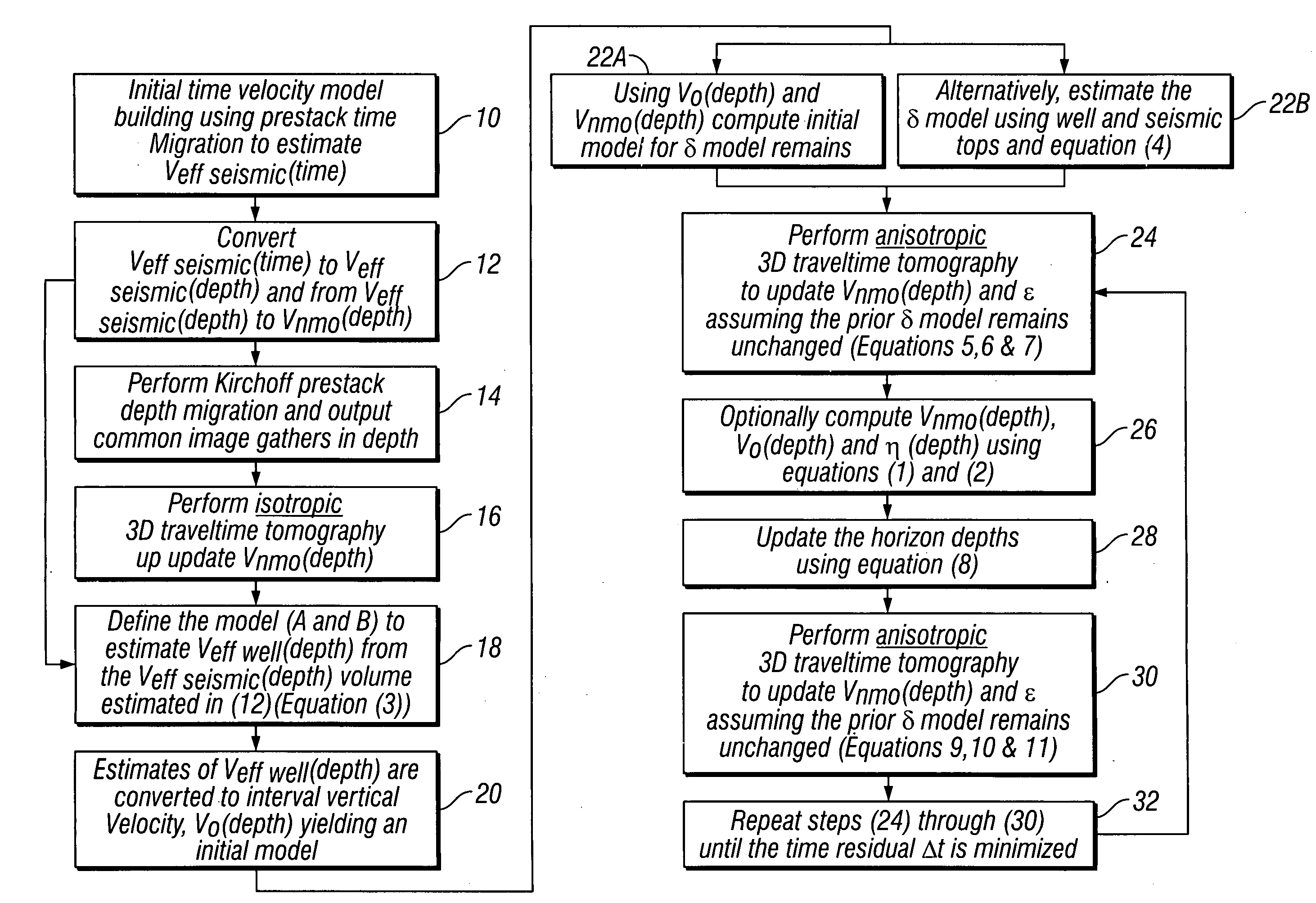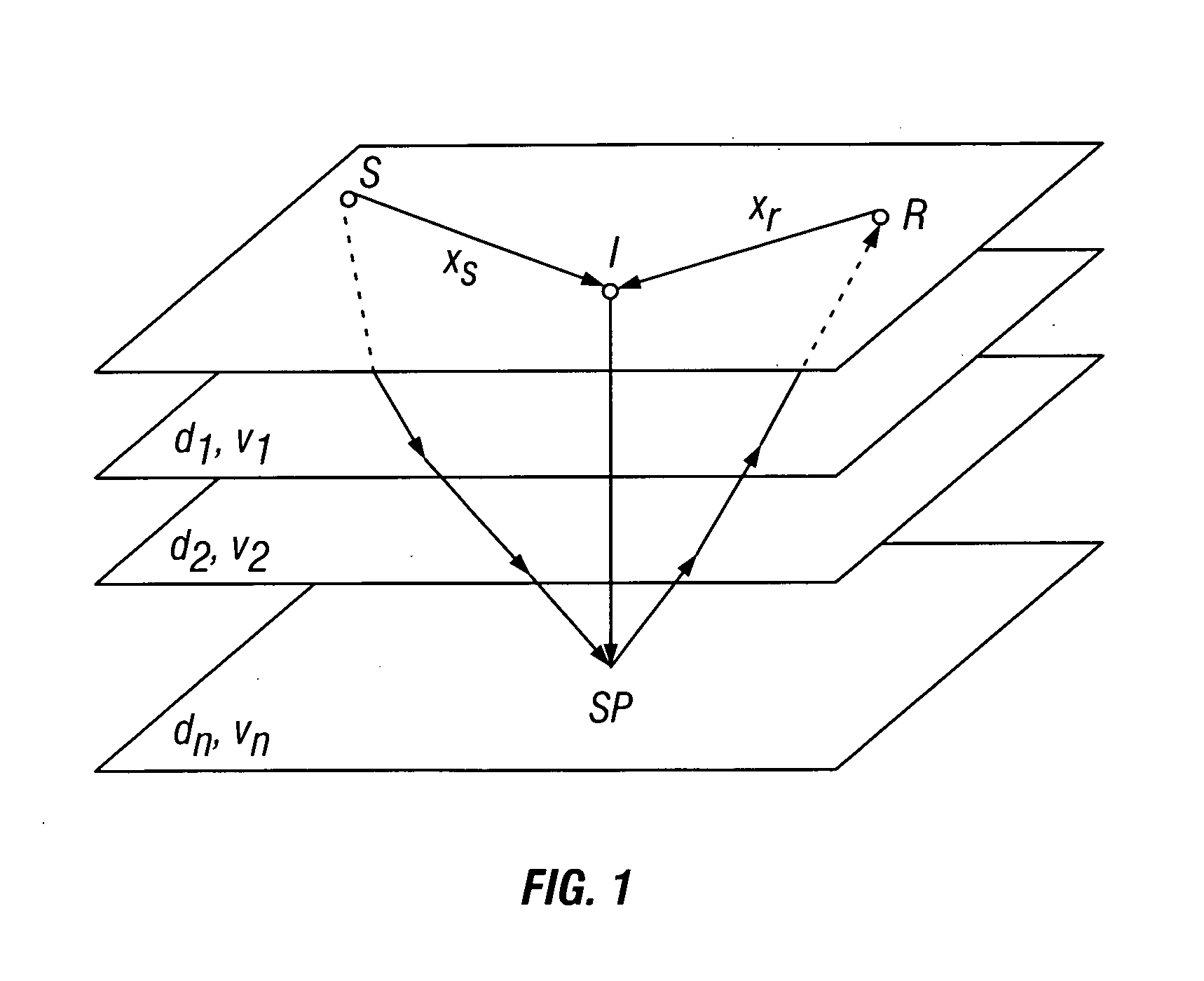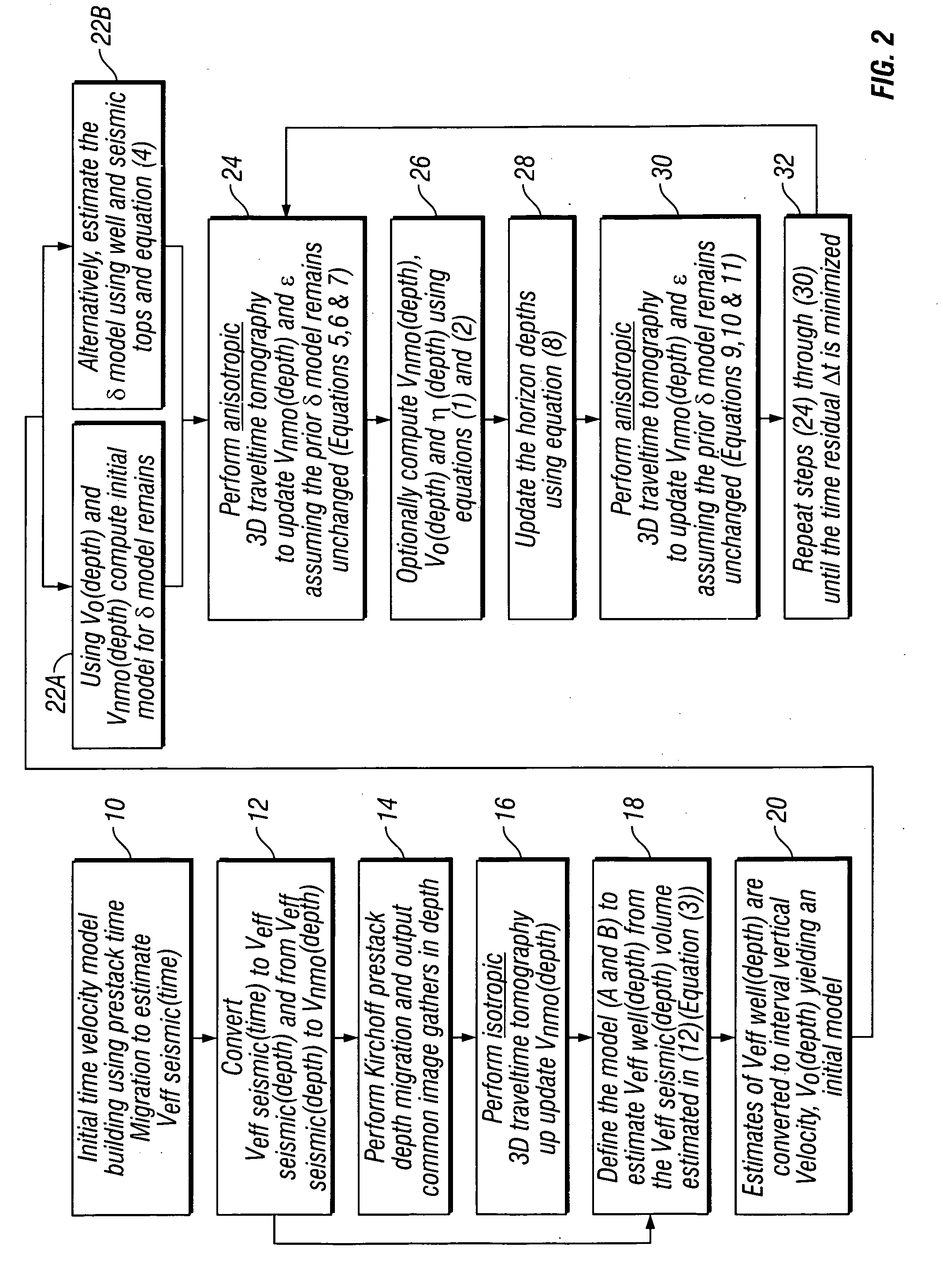Method for three dimensional seismic travel time tomography in transversely isotropic media
a technology of travel time and tomography, applied in the field of seismic data processing, can solve the problems of inaccurate pre-seismic depth migration, inability to accurately predict the position of seismic events in space, and inability to optimize the energy “focusing” after migration
- Summary
- Abstract
- Description
- Claims
- Application Information
AI Technical Summary
Problems solved by technology
Method used
Image
Examples
Embodiment Construction
[0022]FIG. 1 shows a seismic energy travel path from a first source position S (geodetic position of a seismic energy source) to a first scatter point SP (a seismic imaging point in the subsurface corresponding to a particular geodetic position at the Earth's surface), and from the first scatter point SP to a first receiver position R (the geodetic position of a seismic receiver at the Earth's surface) The geodetic location at the Earth's surface directly above the first scatter point SP is designated as I, or the imaging location or “image point.”FIG. 1 shows the seismic energy travel path from only one source location, to the scatter point and back to only one receiver location. It should be understood that in a three dimensional (“3D”) seismic survey, in which there are a plurality of source positions and receiver positions, there is a seismic energy travel path from each source positions to each receiver positions through the scatter point SP. It is the object of the migration p...
PUM
 Login to View More
Login to View More Abstract
Description
Claims
Application Information
 Login to View More
Login to View More - R&D
- Intellectual Property
- Life Sciences
- Materials
- Tech Scout
- Unparalleled Data Quality
- Higher Quality Content
- 60% Fewer Hallucinations
Browse by: Latest US Patents, China's latest patents, Technical Efficacy Thesaurus, Application Domain, Technology Topic, Popular Technical Reports.
© 2025 PatSnap. All rights reserved.Legal|Privacy policy|Modern Slavery Act Transparency Statement|Sitemap|About US| Contact US: help@patsnap.com



